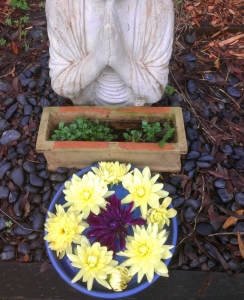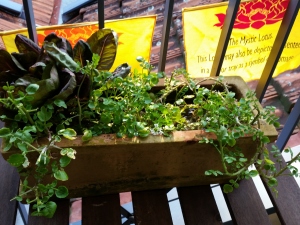I love watercress
Watercress is common and easy to grow. This aquatic perennial either floats or creeps in water. The succulent green leaves and the white flowers appearing in early summer to mid autumn, are delicious and edible. It can be eaten raw or cooked.
Very valuable medicinal properties include:
- stimulant
- diuretic
- antipyretic.

In some countries it is used as a:
- contraceptive
- aphrodisiac
- purgative
- asthma remedy.
All you need to get started:
- bunch of organic watercress
- a jar, trough, bucket or vase
- bag of stones
- filtered water.
Eight simple steps to growing your own watercress

- Choose 5-10 of the healthiest slips and cut the tops off.
- Fill your chosen container with quality filtered water.
- Place the rocks in the bottom with a small handful of soil (optional).
- Now place the stalks of watercress as if arranging a bowl of flowers.
- Keep well watered.
- Place bowl or trough it on the windowsill, outside on the balcony or in the garden. Anywhere will do.
- Pick watercress shoots regularly and add to salads and omelettes. You can also make your own pear and watercress soup served hot in cold weather and cold in warmer weather.
- Always wash watercress well to avoid any possible contamination with liver fluke. Wash well and soak for 15 minutes in 10 per cent white vinegar to water.
TIP: As a home remedy I make an excellent cough remedy mixed with honey.
My challenge to you
As your watercress grows abundantly, share and teach your friends to take charge of their health naturally too by growing their own organic watercress. It is easily propagated by stem and root.
Why watercress is so good for you?
It contains among other constituents:
- vitamins – A ,B, C, D and E
- manganese
- iron
- phosphorus
- iodine
- calcium.
Download your Low Budget Organic Gardening eBook – Understanding Companion Planting
“A wondrous source of nutrients for the body and to help clear cancerous growths”
Tern Teague and Mildred Jackson’s ‘The handbook of alternatives to chemical medication’